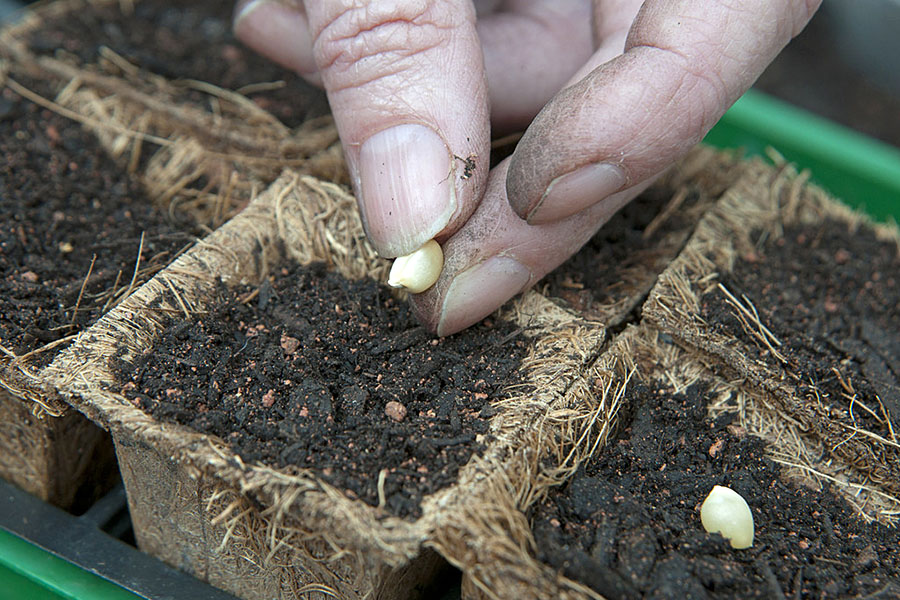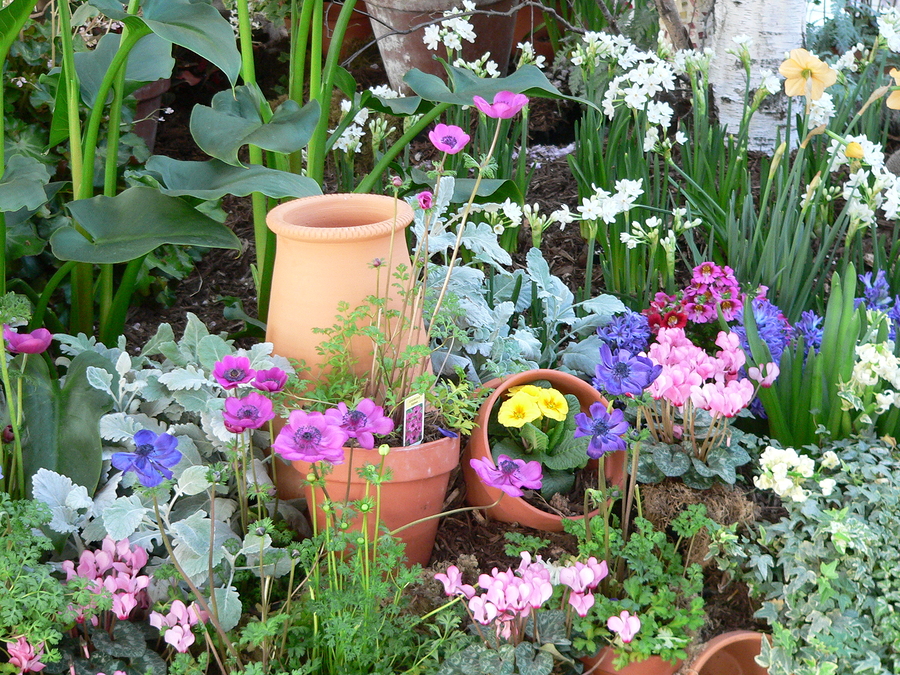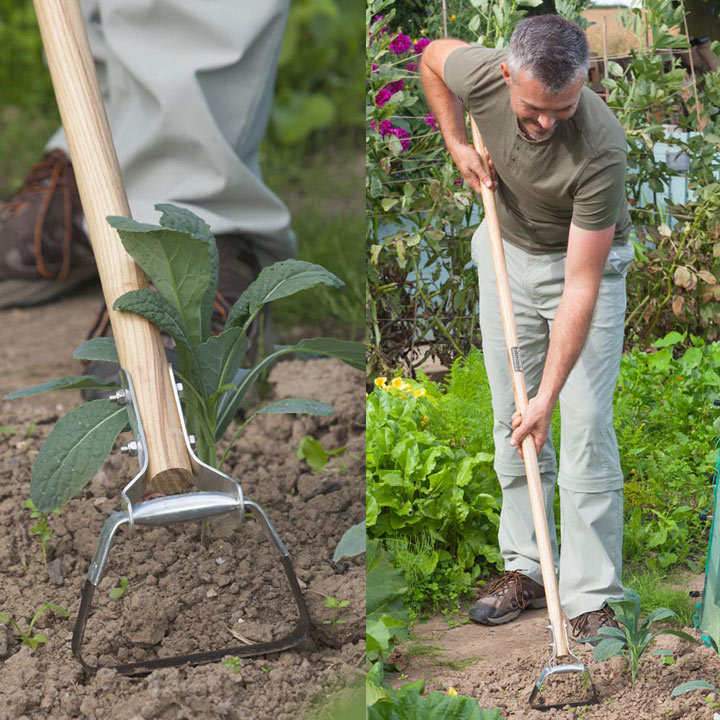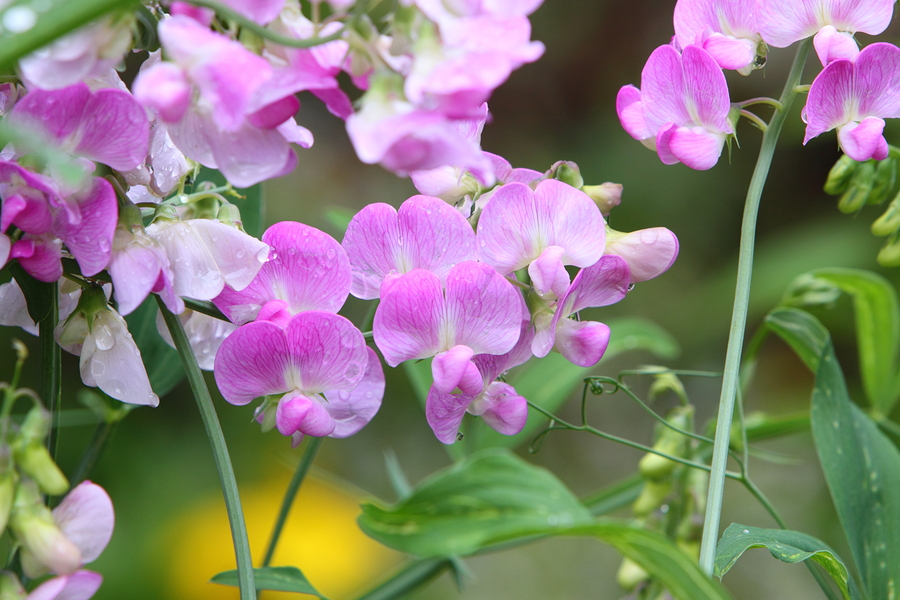Peter’s Gardening Tips for the month of April
After some wonderfully warm and sunny spring weather in March, some of us have experienced some snow flurries this week!
Hot off the press!
Did you know slug pellets are now banned? Slug pellets can no longer be sold or used in the UK, as of Friday 1st April, as they pose an “unacceptable risk” to birds, dogs and mammals.
Garden with care at the moment, as frosts are forecast for early April and the nighttime temperatures are still very low.
If you are lucky enough to have a garden to enjoy, there is much to do right now, it’s a challenge to know where to begin … here are my top tips for this month:
Lawns
It is all too common, you look out over your once pristine lawn and see brown and yellow patches. When you walk onto it the ground feels spongy! What is the problem? Most likely moss and thatch.
Moss and thatch are signs that your lawn is unhealthy. Leaving them unchecked can cause considerable damage to your lawn. Both prevent healthy grass from growing and can lead to the presence of lichens and liverworts. No need to worry though, in this article we look at these common lawn problems and the best way to deal with them.
Perk up your lawn with a feed, weed and moss killer. Aerating the lawn is a must after winter. This can be done by standing on a fork in a lawn and gently pulling back on the fork – not breaking the handle! The ground will lift a bit and crack the surface so improving drainage and critically getting more air to the roots of the grass.
Alternatively, you could invest in a pair of Lawn Aerating Sandals. This will help the grass to grow and reduce moss and algae. If your lawn is large forget doing the above by hand or foot and hire a Lawn Aerating machine, either with solid tines or a slitting machine.
After scarifying or aerating, any bare patches can be over-seeded with new grass seed lightly covered with fresh soil, and keep watered. If the whole lawn is looking thin, then over-seed the whole area, one handful of seed to the square yard/metre. A lawn spreader can be hired for use on larger areas.
Mowing
In the south raise the cutting deck – long grass copes better with hot, dry weather. Further north you’ll wonder what the fuss is about! Carry on as usual…
Hoeing beds
Now is a great time to break up compacted soil in your flower beds and a handy tool to help you is this Wiggle Hoe from Sarah Raven.
Vegetables
The popularity of growing your own fruit and veg has boomed in the past few years.
Now is a great time to buy fruit and vegetable plants. You can harvest a crop for many years to come, it is great fun and highly rewarding to eat the fruits of your own labour.

Sowing seed of sweet corn into individual coir biodegradable pots
Only sow if you can protect your seedlings from extremes of weather and the ground temperature is above 5°c. Cloches, cold-frames, Enviromesh, fleece will protect delicate seedlings and keep pigeons/ birds/ rabbits off.
Clear weeds, tickle over the surface with a fork, rake out lumps, break up with the rake head laid flat with the ground and tamp up and down crushing the lumps. Then rake to a fine crumbly texture or tilth. A wooden scaffold board is now great to work off. Create a straight edge where you want the row of the seeds to grow. Stand on the board and use a trowel or the back of the rake and draw this along the side of the board edge creating a shallow furrow in the soil. Now you can seed sow, there is so much choice from carrots, lettuce, radish, beetroot, and spinach. Sow peas, broad beans, white cabbages, and broccoli. Plant out onion sets and shallots. Cover where you can with Enviromesh to keep bugs off.
In the greenhouse, plant courgette, marrow, squash, tomato, cucumber, and pumpkin seeds. Always use fresh seed compost and warm it up, avoid using cold, wet compost! If you have a heated propagator you will achieve better and quicker germination, a great investment.
Plant out potatoes, remember to plant at least 6” deep, adding potato fertiliser or growmore. Potatoes are hungry plants. Once the leaves come through be prepared to cover with horticultural fleece for frost protection. Others for seed sowing include cauliflowers, Brussels sprouts, cabbages, purple sprouting, broccoli – these all need a lot of room to grow, read the packets!
Celery, ridge cucumber, parsnip, climbing beans, runner beans, French beans leave until the end of the month and sow indoors.
Feeding and Watering
New growth on all plants shows the plants are growing so this is the time to feed any trees, shrubs, herbaceous, climbers, fruit bushes etc.
Liquid feeding works quickest and where you have a deficiency use a foliar feed like Vitax liquid seaweed plus Iron.
For established plants use Gro-Sure slow release plant food from Westland or 6X for a natural product. There are plenty of fertilisers to choose from.
Flower Garden – Sweet peas can be planted out into the ground or a large planter. Put in bamboo canes or string supports to support and climb up. Use a good quality compost for containers with John Innes No 2 and combine with multi-purpose compost 50/50 split. Pinch out growing tip if plants are too tall back to 4-5 leaves.
Bulbs – Take off faded flowers and the seed pod on the stalk especially daffodils. If you want Snowdrops and smaller bulbs to spread leave them on. You can dig up large clumps of Snowdrops and split them up into smaller groups. Re-plant where you want to move them to straight away.
Dahlia Tubers – Time to check and pot up into fresh compost. Any soft or rotten tubers need to be cut off and thrown away, water and place in the greenhouse or a light windowsill.
Begonia Tubers – These can be started up again. A tip I was given years ago is to place the corm on fresh damp compost upside down, convex upwards! Leave like this for 2 weeks, and when you lift off the corm and look at the concave side there should be several buds – 3 or more. Now you can plant them the right way up as usual, do let me know how you get on?
Garden Lillies – If you want scent go for the oriental and longiflorum types. Great for summer colour, and plant in containers a handful of gravel under each bulb. John Innes/multi-purpose mix again, placing it 6” down in the plot or plant in the ground again with gravel or coarse grit under the bulb. Water and feed plants in containers, and any newly planted plants.
Plant supports and Training
Clematis, roses, climbing plants of all sorts need support, training or tying in. Don’t be frightened by pinching out the growing tip of clematis to make them bushier, if it means sacrificing the odd flower bud you will be paid back handsomely!
Use Pea sticks for herbaceous plants, they look the natural business! Just use any supports now before the triffids take over!
Peonies are a must. One of the quintessential cottage garden plants. Feed and water now for the best flowers. The Queen of Peonies is Claire Austin. If you love them as much as I do you’ll love her Book of Perennials. Website: claireaustin-hardyplants.co.uk
Happy Gardening everybody!
Latest posts by Peter Mills (see all)
- Peter’s Gardening Tips for the month of April - March 31, 2025
- Gardening Masterclass: How to prune roses, hydrangeas, shrubs and trees - March 2, 2025
- Peter’s Gardening tips for March - March 1, 2025
- Peter’s Gardening Tips for February - January 29, 2025
- Peter’s Gardening Tips for January 2025 - January 2, 2025
























